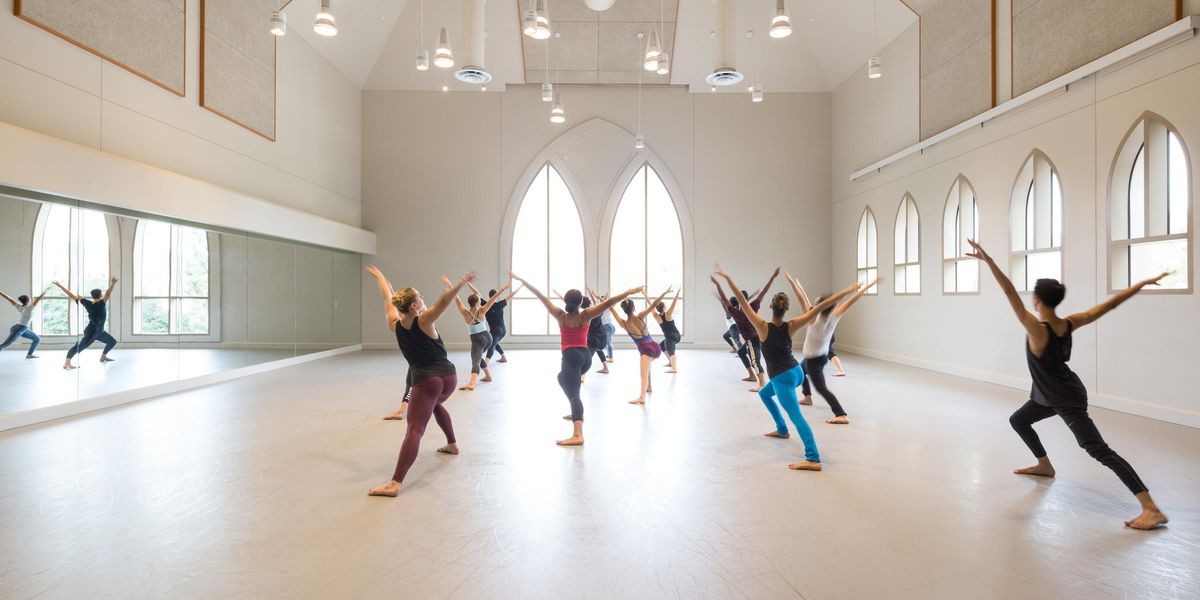Mind Your Body
Emilie Conrad begins to demonstrate a wave motion and suddenly the room quiets down to an intense hush. Her rippling spine appears more like water than bone. Students may feel like they are watching a performance rather than a demonstration.
“Human beings are like fish that swim in the ocean not knowing the basic wave movements of the ocean,” says Conrad, who is based in Santa Monica. “In the context of evolution, we are moving water brought to land.” Conrad, the founder of Continuum, has been a charismatic figure on the somatic scene for the past four decades—and one of the few who hail from the dance world.
The basic idea of Continuum is that activating the body’s fluid system boosts our creativity, flexibility, and vitality. Conrad considers fluid in a broad sense, encompassing cerebral-spinal fluid, cellular fluid, blood, membranes, and synovial fluid. If the human body is made up of mostly water, it follows that movements that spiral, arc, curve, and undulate are vital to our health.
Conrad began ballet training at 14 and eventually landed at Katherine Dunham’s school in Manhattan, where she studied Haitian dance. “The undulating bodies and the feeling of the drums—like blood circulating—had a profound influence on me,” remembers Conrad. “The sheer earthiness of the movement stays with me.” She also studied with Pearl Primus, who, like Dunham, combined African and western dance forms, and with ballet teachers Don Farnsworth and Richard Thomas. She founded a mambo dance group that eventually took her to Haiti in 1955. Her five years in Haiti laid the groundwork for Continuum.
When Conrad leads a workshop, she uses a sequence of movements, sounds, or breathing exercises as a launching pad for individual exploration. She calls this improvisatory state “open attention,” and the whole experience a “dive” because the mover travels beneath the surface of known movement. Dives can last from 20 minutes to several days in her “depth” retreats. At the end of the dive, the student returns to the original sequence of movement, breath, or sound.
Sound activates the fluid system and can penetrate human tissue. An “E” sound widens, while the “O” sound elongates. The “Hu” breath is a quick hot breath that helps dancers warm up, while the “Lunar” breath calms and induces a contemplative state.
Continuum has been attracting dancers and other curious movers since 1967. Several dancers have become Continuum teachers or have incorporated Conrad’s concepts into their classes and choreography. Bonnie Simoa, who teaches dance at Lane Community College in Eugene, Oregon, finds her students eager to embrace Continuum ideas. “The work gives students access to their creative and physical potential and to a concept of ‘smart dancing.’ They learn to respect and listen to their bodies’ inherent wisdom.”
Robin Becker has used material generated from her dancers’ dives to choreograph. A dance teacher at Hofstra University, she says she also delights in seeing her students practice Continuum as a way to prepare for performances.
Conrad finds a natural connection between Continuum and choreography. “We get closer to the biological meaning of creativity, and the palette of possibilities becomes so much broader,” says Conrad. “Dancers can open to joy and pleasure and a greater access to articulation and expression.”
Part of Conrad’s radical approach to fitness is called “Jungle Gym.” Using a seated contraption she invented called an “explore board,” students find new relationships to gravity and test the waters of their strength. Rachel Shao-Lan Blum, a choreographer and teacher in Los Angeles, studied Continuum to heal a shoulder injury, but found the work moved into deeper places of learning and healing. “Continuum is like a trusty craft that I depend on to sail me back to balance,” says Blum.
Although Continuum has therapeutic benefits, Conrad considers her work an art form. A Continuum adventure breaks out of the confines of learned movements and invites us to fully inhabit our fluid bodies and nurture expression at its deepest level. www.continuummovement.com.
Nancy Wozny is a Feldenkrais practitioner and freelance arts writer based in Houston, TX.




